dance style
Bharatanatyam
Bharatanatyam, a captivating classical dance form originating in South India, stands as a testament to cultural richness. Its hallmark features include the mesmerizing interplay of intricate footwork, expressive hand gestures, and resplendent traditional costumes. Rooted in the tapestry of Hindu mythology and spirituality, Bharatanatyam is a storytelling medium that weaves narratives through the fluid language of precise movements, known as mudras, and rhythmic cadences. The dancer’s posture, with knees gently bent and body gracefully poised, lends an aura of elegance. Draped in vibrant sarees adorned with intricate jewelry and embellished with flowers that adorn their hair, performers exude an aura of timeless beauty.
Courses Offered in bharatanatyam
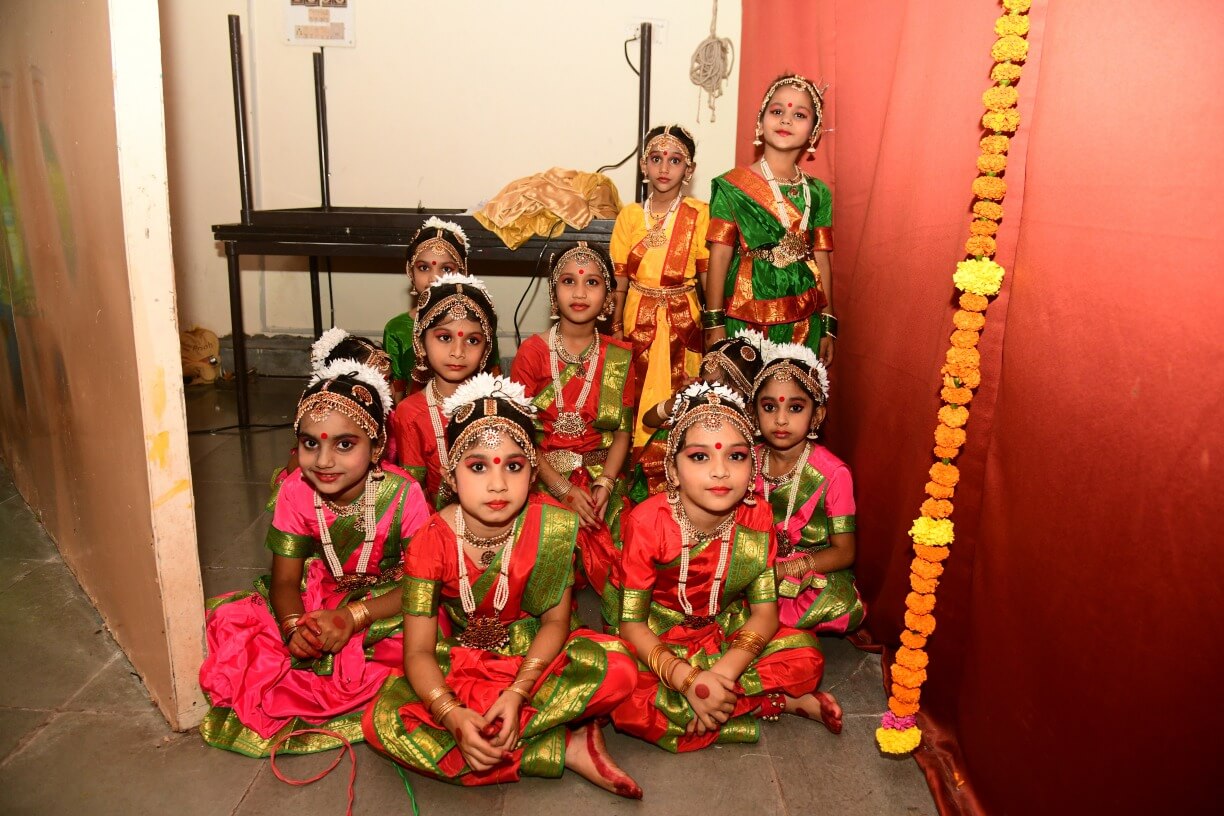
diploma
(Prarambhika, kovida)
- For Age Group of 4 to 15 years
- SCC Grace Marks
- Cultural Quota (Helpful in Admission of Higher studies)
- Batch size (25-30)
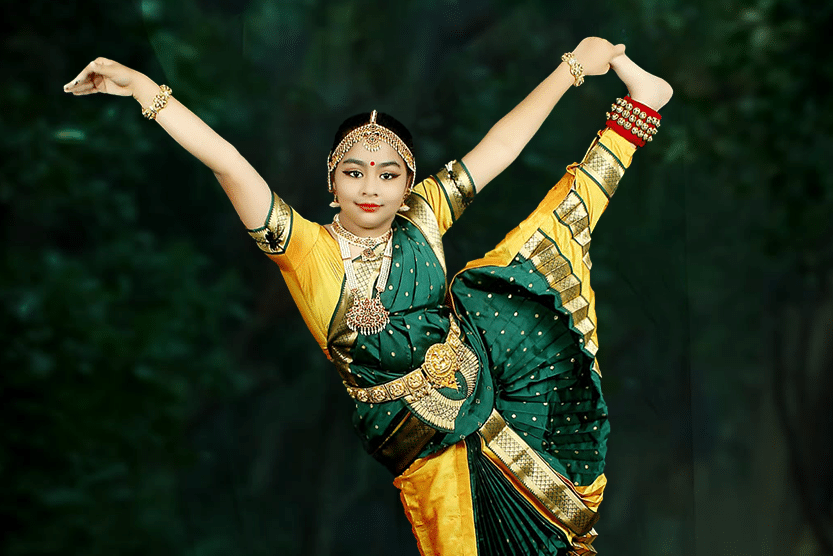
advanced diploma (advance / master)
- For Age Group of 15 years +
- One on one sessions
- Job opportunities as Instructors/Masters of Classical Arts
- Batch size (1-5)
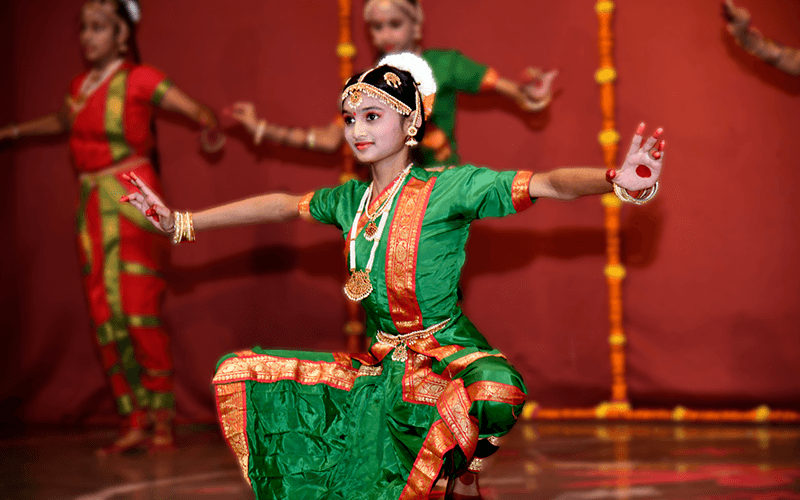
degree
(B.A. / M.A)
- Pursue carrier in Classical Arts
- Part time
- Job opportunities as Instructors/Masters of Classical Arts
- Batch size (25-30)
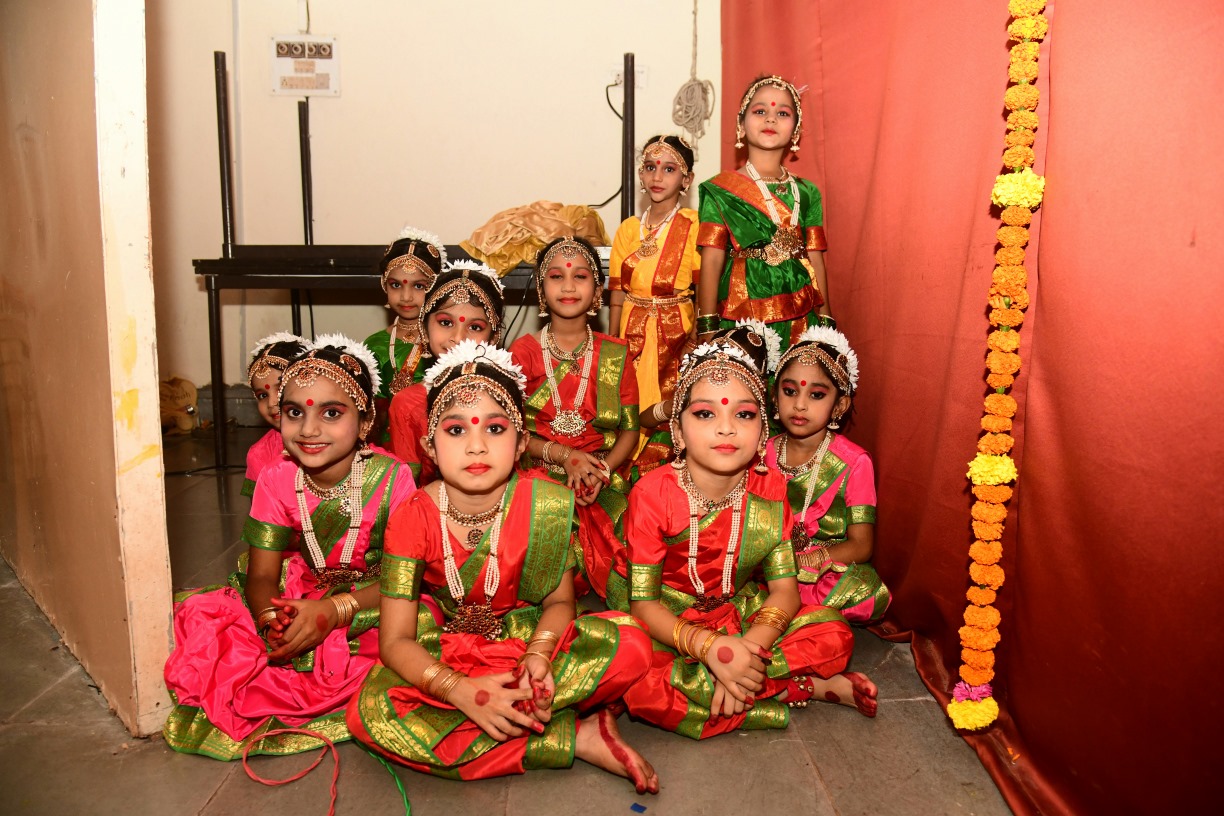
diploma Prarambhika, kovida
- For Age Group of 4 to 15 years
- SCC Grace Marks
- Cultural Quota (Helpful in Admission of Higher studies)
- Batch size (25-30)
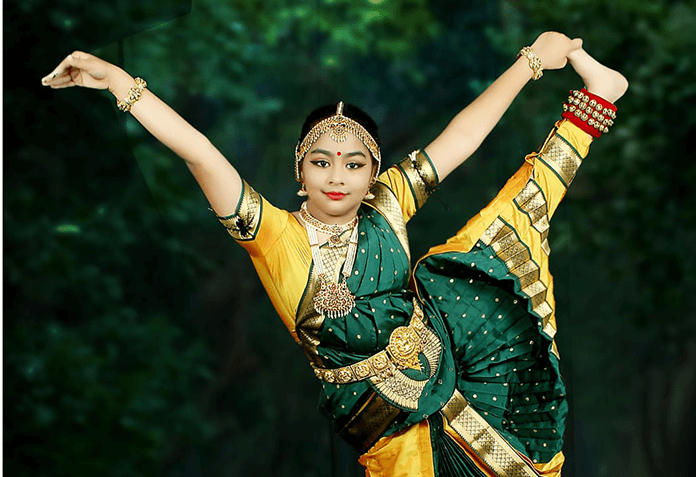
advanced diploma (advance / master)
- For Age Group of 15 years +
- One on one sessions
- Job opportunities as Instructors/Masters of Classical Arts
- Batch size (1-5)
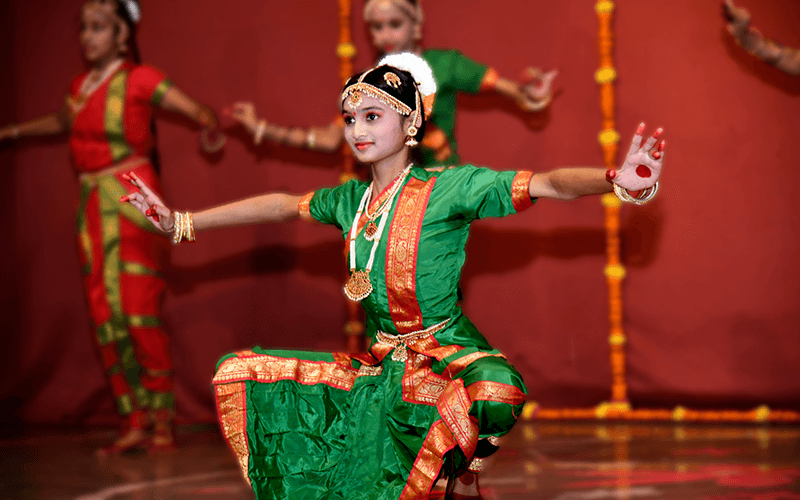
degree
(B.A. / M.A)
- Pursue carrier in Classical Arts
- Part time
- Job opportunities as Instructors/Masters of Classical Arts
- Batch size (25-30)
Frequently Asked Questions
Some of your queries
Bharatanatyam is a classical dance form originating from the state of Tamil Nadu in South India. It is known for its intricate footwork, expressive hand gestures (mudras), elaborate facial expressions, and rhythmic patterns. The dance often narrates mythological stories and devotional themes.
Yes, Bharatanatyam classes often cater to beginners. They start by teaching the fundamental aspects such as adavus (basic steps), mudras (hand gestures), and basic poses. As you progress, you’ll learn more complex choreography and techniques.
Traditional practice attire for women includes a fitted ankle-length skirt (usually called a “pattu pavadai”), a blouse, and a dupatta (scarf). Men typically wear a dhoti or comfortable pants with a fitted shirt. Some institute may have specific dress codes so we request you to ask the respected teachers.
Bharatanatyam is open to learners of all ages. While many start learning at a young age, numerous classes are designed for adults as well. Age should not be a barrier to learning and enjoying this art form..
A full-fledged Bharatanatyam performance can range from 45 minutes to over an hour, depending on the complexity of the repertoire. The time it takes to perform a complete piece can vary based on your proficiency and the specific items you’re presenting.
Yes, Bharatanatyam provides several health benefits. It improves flexibility, strengthens muscles, enhances posture, and increases stamina. The rhythmic footwork and hand movements also contribute to coordination and balance.
Jathis are rhythmic patterns that accompany a dance piece, often performed by percussion instruments. Adavus are basic steps and movements in Bharatanatyam, forming the foundation for more complex choreography. Learning adavus is crucial for building a strong dance vocabulary.
While it’s not mandatory, having some understanding of Carnatic music can be beneficial for Bharatanatyam students. Familiarity with the music’s structure and rhythm can help you synchronize your dance movements with the music.
Regular practice is essential for improvement in any dance form. Starting with a few hours a week and gradually increasing your practice time will yield better results. Consistency is key to refining your techniques and mastering the art.
Absolutely! Performing on stage is a significant aspect of learning Bharatanatyam. Most dance schools organize annual recitals or performances where students can showcase their progress. Stage performances provide valuable experience and help build confidence.
